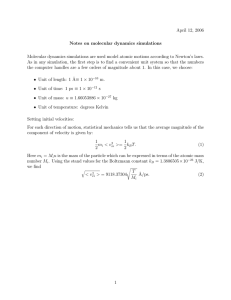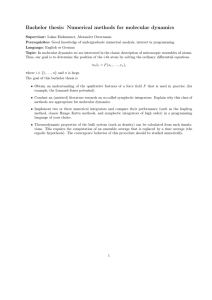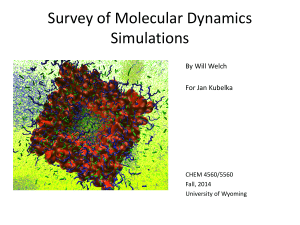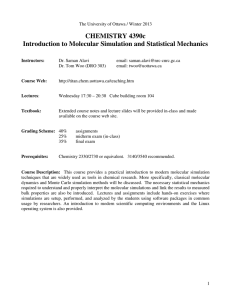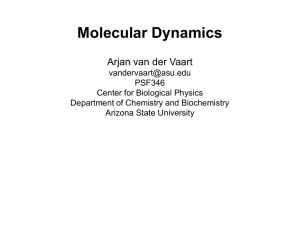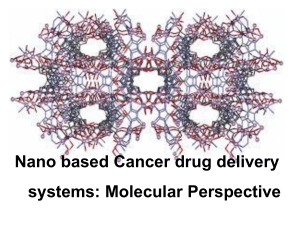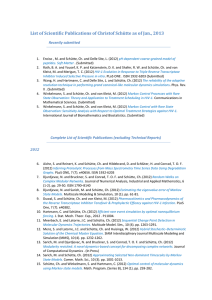Robin_MD.ppt
advertisement
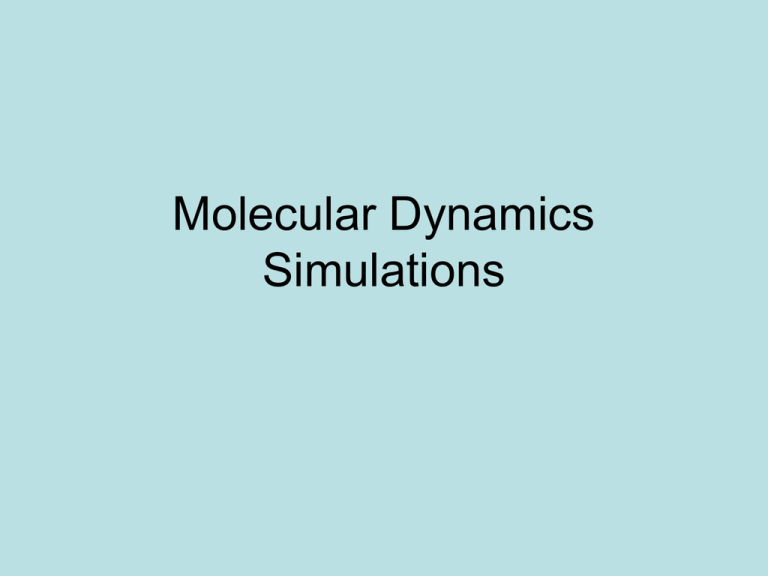
Molecular Dynamics Simulations Objective : To understand the properties of materials Question : How to accomplish the goal? Answer : Positions and momentums of each atom have to be determined Theory of molecular dynamics • What is molecular dynamics? • The idea – Compute the forces acting on the atoms in a molecular system – Analyze the motions – Deduce the bulk properties of the material Classical Mechanics (1) (6) (2) (7) (3) (8) (4) (5) (9) (10) • Verlet algorithm r(t+∆t) = r(t) + v(t)∆t + (1/2)a(t)∆t2 (1) r(t-∆t) = r(t) – v(t)∆t + (1/2)a(t)∆t2 Summing these two equations yields r(t+∆t) = 2r(t) – r(t- ∆t) + a(t)∆t2 (2) (3) v(t+∆t) = v(t) + a(t)∆t + (1/2)b(t)∆t2 a(t+∆t) = a(t) + b(t)∆t (4) (5) Plugging b(t) from (5) into (4) yields v(t+∆t) = v(t) + (1/2)[a(t) + a(t+∆t)] ∆t (6) Other algorithms • Leap-frog algorithm r(t+∆t) = r(t) + v(t+(1/2)∆t) ∆t v(t+(1/2)∆t) = v(t-(1/2)∆t) + a(t) ∆t • Beeman’s algorithm r(t+∆t) = r(t) + v(t)∆t + (2/3)a(t)∆t2 – (1/6)a(t-∆t)∆t2 v(t+∆t) = v(t) + v(t)∆t + (1/3)a(t)∆t + (5/6)a(t)∆t–(1/6)a(t∆t)∆t


